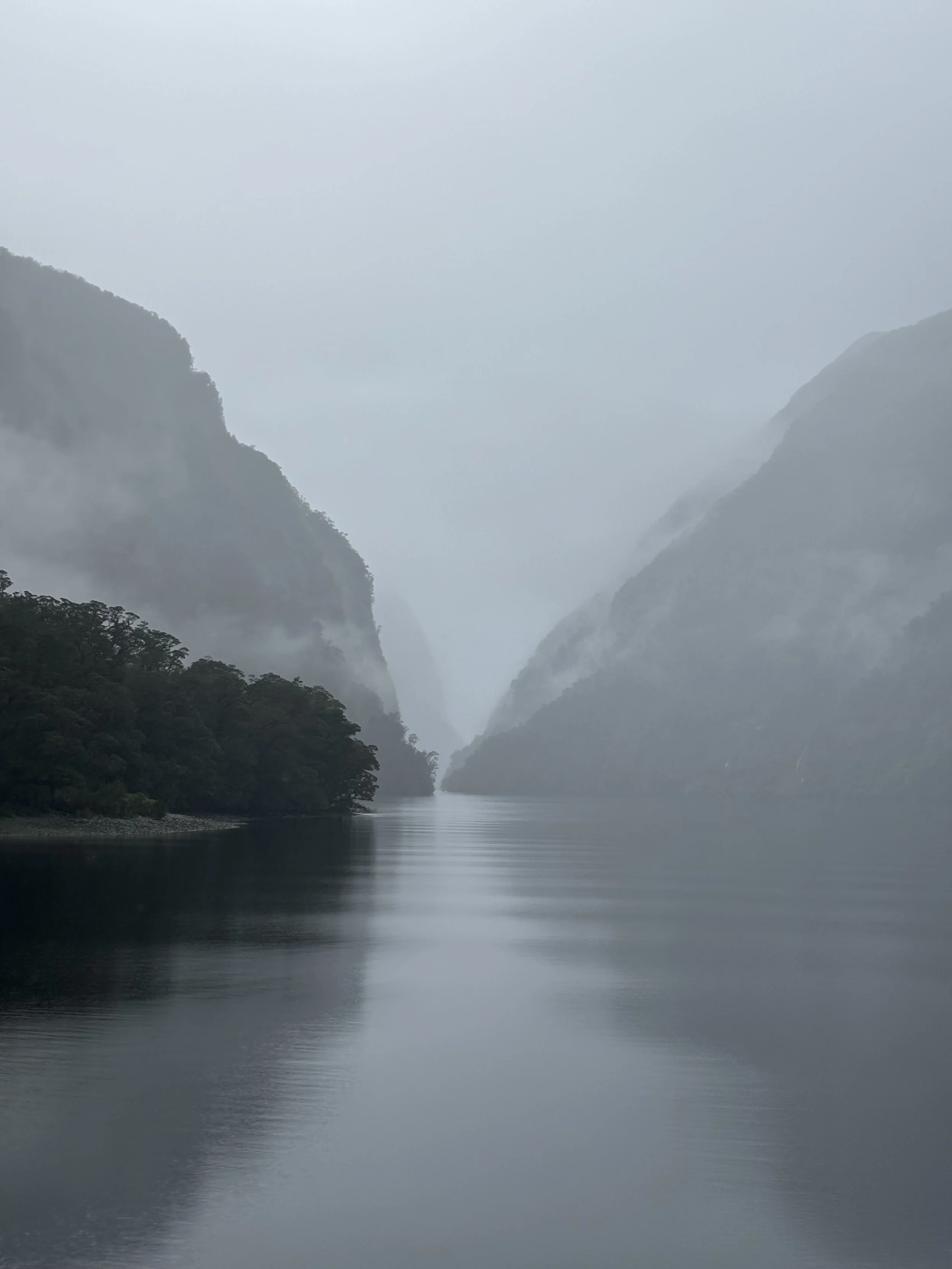Water
Fiordland is shaped by water.
It falls, flows, floods, and soaks into everything.
Some years, it rains over eight metres. That’s not a typo. It’s enough to swallow a two-storey house. There are weeks it barely stops. Days where the air itself feels saturated. It runs down rock faces in rivulets, then gathers speed, carving paths through forest and stone. The waterfalls don’t trickle. They roar. Hundreds of them appear during a storm, pouring straight from the cliffs into the sea. Some vanish within hours. Others cut deep and stay.
The rainforest needs it. Thrives on it.
Roots cling to wet rock. Moss wraps every surface like a sponge.
The trees don’t grow out of soil, they grow out of other trees.
Dead ones. Fallen ones. Whole ecosystems layered on top of each other, kept alive by the constant soak.
This place is built on the back of collapse.
When one tree goes, it takes others with it.
Locals call it a tree avalanche.
The hillside buckles. The canopy tears open. New life moves in.
It’s chaos, but it works. The rain keeps it going.
Every inch of growth in Fiordland carries the memory of that water.
Soaked roots, swollen bark, trunks twisted by the weight of years.
And then there’s the tannin.
All that rain leaches colour from the forest floor, from leaves and bark, staining the water a deep amber.
It runs down into the rivers and out into the fiords, casting a dark sheen across the surface.
In the fiord, the tannin sits on top of the seawater, creating a murky lens that tricks the light and lets deep sea life survive just metres below the surface.
On calm days, the water turns mirror-black.
Mountains double in size.
The line between sky and sound blurs.
It becomes a place that’s hard to measure, but easy to feel.
It’s not always easy living with this much water.
It floods tracks, seeps into boots, turns campsites into creeks.
The ground is slick. The gear stays damp. And sometimes, even the best plans wash out.
But that’s part of it. You don’t fight the water here. You work around it.
For us, it’s the same.
The logs we work with have all lived through this.
Waterlogged, flood-lifted, tannin-stained.
Many of them have spent years steeping in these fiords.
They dry slow. They carry scars. And they carry stories.
What we make is shaped by the same forces.
The weight of weather. The pull of time. The quiet persistence of water.
These logs weren’t harvested, they were found.
Lifted from the tide, stained by the land, and brought back to life with care.
Every finished piece carries that history with it.
